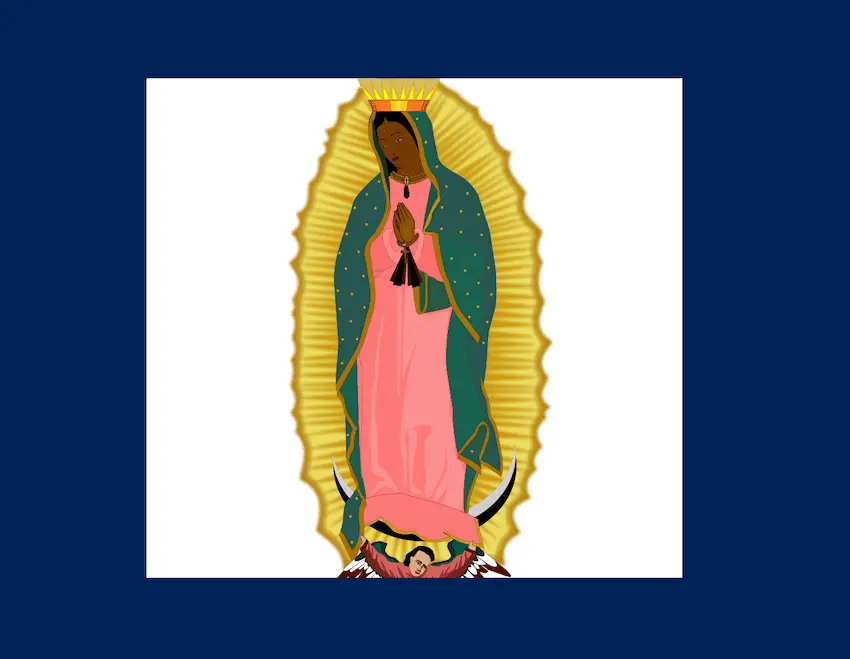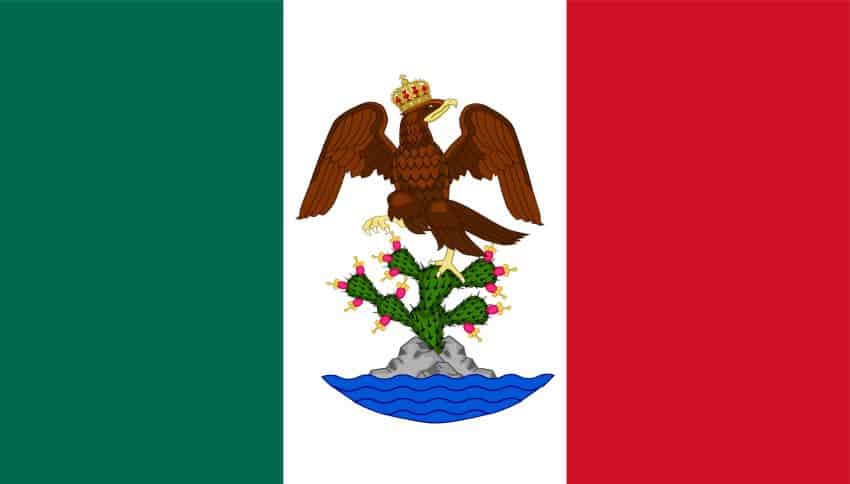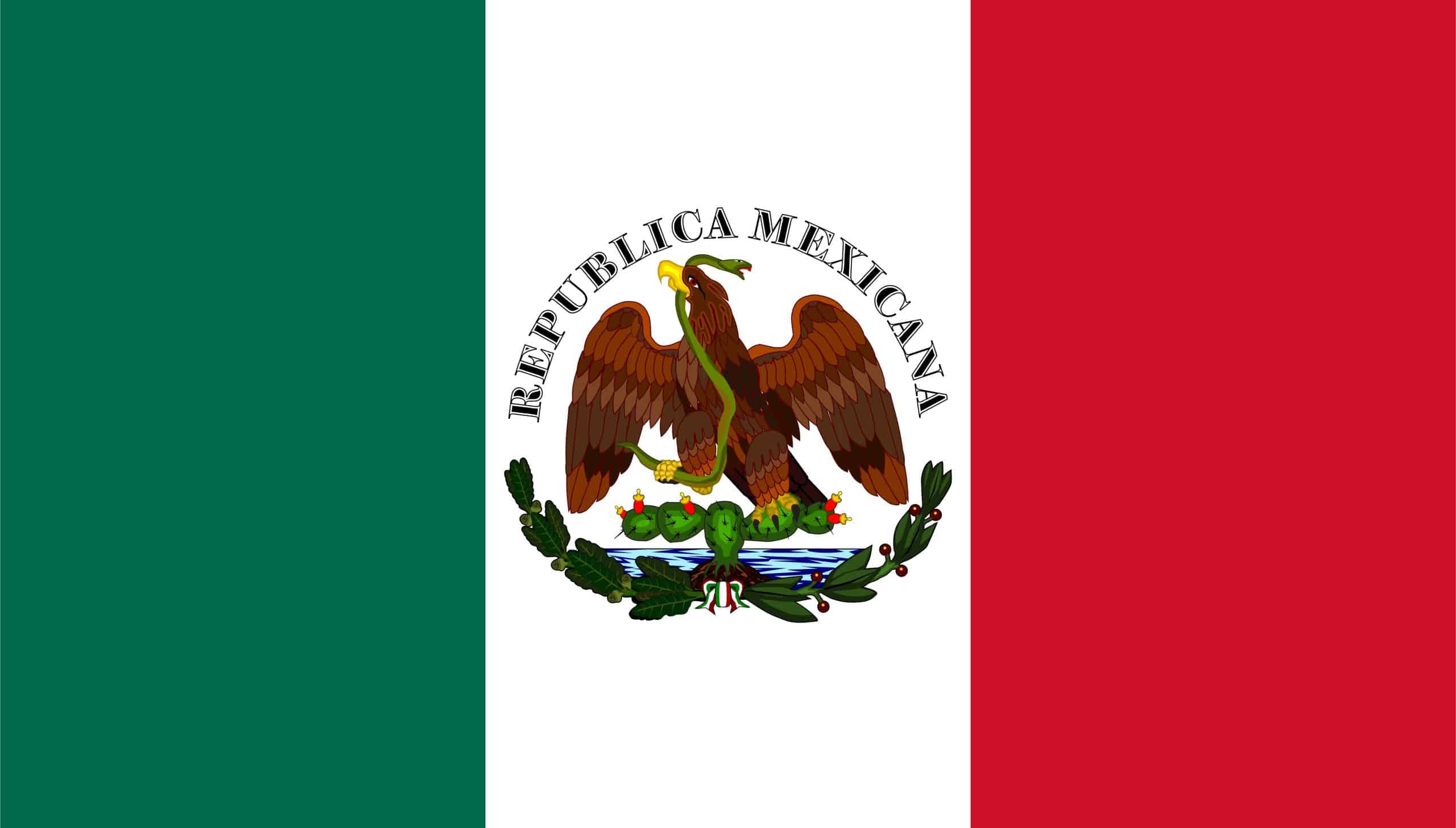Every year on Feb. 24, Mexicans commemorate one of the country’s three national symbols: the Mexican flag.
On this day, students nationwide hold special flag ceremonies at school and pledge allegiance to the flag while singing “El Toque de Bandera,” a short anthem in its honor.

As an emblem of national identity, our flag reveals crucial parts of our country’s history, dating back to the Mexica Empire, the Spanish conquest and most recently, Mexico’s independence.
In today’s story, we will explore how Mexico’s flag has changed over time, its current role as a symbol of unity and the fascinating myth that inspired its emblem. We will also explore the laws that currently regulate it and why, unlike the U.S. flag, it’s impossible to find the Mexican flag on commercial merchandise.
Our Lady of Guadalupe: Mexico’s first flag

In September 1810, Father Miguel Hidalgo y Costilla, often referred to as the Father of the Nation, took the banner of the Virgin of Guadalupe from the sacristy of the parish of Atotonilco, Guanajuato and used it as a symbol of resistance and unity to claim independence from Spain.
As a priest, Hidalgo was well aware of mass religious sentiment towards the Virgin Mary and knew that only she could unify the entire country for a common cause.
The flag of Emperor Agustín de Iturbide

Once Mexico achieved independence in 1821, criollo Agustín de Iturbide — who fought for the royalist army against the insurgents before joining them in 1821 — was proclaimed Emperor of Mexico and used a tricolor flag to represent his government.
This flag was Mexico’s first as an independent country and features a crowned eagle shield and the colors of independence: green, white and red, which would remain in subsequent flags.
In this flag, white represents the Catholic religion, green represents Mexico’s independence and red represents the unity of Mexicans with Spain.
Benito Juárez flag

The flag used during the government of Benito Juárez, which lasted from 1858 to 1872, is known as the republican banner. In this version, the eagle no longer has a crown, and laurels and olive trees represent the republic.
The colors also changed meaning as a result of the separation of church and government: green represents hope, white represents unity and red represents the blood of the nation’s heroes.
The flag of Emperor Maximilian I of Mexico

In 1864, Archduke Maximilian of Austria was appointed Emperor of Mexico by Napoleon III. During his rule, the Mexican flag underwent some design modifications, including changes to its proportions and the addition of four crowned eagles in each corner. Its appearance was similar to the coat of arms of the Second French Empire.
The flag remained in use until 1867, when the Austrian monarch was executed and Benito Juárez’s government returned from exile.
Porfirio Díaz flag

By the late 19th century, Porfirio Díaz — who ruled Mexico for over 30 years — used a flag that featured an eagle devouring a snake while perched on a cactus, surrounded by a laurel wreath.
Due to Díaz’s preference for French culture, the eagle was depicted in the French style of the time, with its wings spread and facing forward.
The flag of the Mexican Revolution

During the Mexican Revolution, President Venustiano Carranza ordered the eagle’s position to be changed. On September 20, 1916, he decreed that the eagle should be shown prostrate on a cactus, on a rock surrounded by water. The eagle would also be surrounded by a semicircle of oak and laurel and be depicted from the left profile to reflect the ideology of Carranza’s government.
The current flag and the Mexica legend that inspired it

The current Mexican flag was officially adopted on September 16, 1968, by President Gustavo Díaz Ordaz. Maintaining the original colors, its coat of arms depicts a golden eagle perched on a cactus and devouring a snake.
The coat of arms was inspired by the Mexica legend of the founding of Tenochtitlán, part of the myth of the people of Aztlán.
According to the story, in the 12th century, Huitzilopochtli, the god of war, ordered the Nahua people to leave their homeland of Aztlán. The Mexica, one of these groups, were told to build their new city in the place where they saw an eagle perched on a prickly pear cactus while devouring a snake. The Mexica finally saw this sight on a tiny islet in the middle of Lake Texcoco, in the Valley of Mexico.
To build their city, the new residents developed garden islands known as chinampas, connected by causeways. Today, this city has become Mexico City. Since then, the eagle, the snake and the cactus on the islet have been symbols of identity for the Mexica and their descendants.
Regulations around the flag
In 1968, Mexico issued the Law on the National Coat of Arms, Flag and Anthem, which regulates the use of Mexico’s three national symbols.
According to this law, it is illegal in Mexico to commercialize the Mexican flag on merchandise such as coffee cups, t-shirts, pens and other utensils. Selling replicas of the flag is only legal during national holidays.
Gabriela Solís is a Mexican lawyer based in Dubai turned full-time writer. She covers business, culture, lifestyle and travel for Mexico News Daily. You can follow her life in Dubai in her blog Dunas y Palmeras.
